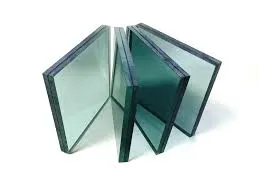What is Architectural Glazing?
Architectural glazing refers to the design and installation of glass systems in buildings that serves both functional and aesthetic purposes. This practice is a vital component of modern architecture and plays a significant role in shaping the overall appearance and performance of a structure. The term encompasses various types of glass applications used in facades, windows, doors, skylights, and partition walls. As architects and builders strive for innovative solutions, architectural glazing has evolved into a sophisticated area that combines technology, design, and environmental considerations.
What is Architectural Glazing?
In addition to its practical advantages, architectural glazing significantly impacts a building's aesthetic appeal. The use of glass can create a sense of openness and fluidity, blurring the boundaries between indoor and outdoor spaces. A well-designed glass facade can elevate the architectural style of a structure, reflecting its surroundings and creating striking visual contrasts. Various glass types, including tinted, frosted, or patterned glass, offer architects numerous design possibilities to achieve their desired effects.
what is architectural glazing
Safety and durability are also critical considerations in architectural glazing. With advancements in technology, today’s glass products are stronger and more resistant to breakage than ever before. Tempered and laminated glass are commonly used in high-rise buildings and areas prone to extreme weather conditions. These materials can withstand significant forces, ensuring the safety of occupants while providing the desired transparency and aesthetic qualities.
Additionally, architectural glazing can serve as a critical component in a building's environmental performance. Many modern glazing systems incorporate features that contribute to sustainability, such as low-emissivity (low-e) coatings that improve thermal performance without sacrificing natural light. Integrating smart glazing technologies, like electrochromic glass, allows for dynamic control over light and heat in response to changing conditions, further enhancing energy efficiency.
The integration of architectural glazing in building design is not without its challenges. Factors such as building codes, structural requirements, and environmental considerations must be meticulously addressed. Architects and engineers must collaborate closely to ensure that glazing systems are not only visually appealing but also meet the necessary safety standards and performance criteria.
In conclusion, architectural glazing is an essential element of contemporary architecture, blending functionality with aesthetics. Its ability to enhance natural light, improve energy efficiency, and elevate design makes it a preferred choice for architects worldwide. As technology continues to advance, the future of architectural glazing holds even more exciting possibilities, promising to redefine how we experience and interact with our built environment. Embracing these innovations will be critical for creating sustainable, beautiful, and functional spaces in the years to come.
 Afrikaans
Afrikaans  Albanian
Albanian  Amharic
Amharic  Arabic
Arabic  Armenian
Armenian  Azerbaijani
Azerbaijani  Basque
Basque  Belarusian
Belarusian  Bengali
Bengali  Bosnian
Bosnian  Bulgarian
Bulgarian  Catalan
Catalan  Cebuano
Cebuano  Corsican
Corsican  Croatian
Croatian  Czech
Czech  Danish
Danish  Dutch
Dutch  English
English  Esperanto
Esperanto  Estonian
Estonian  Finnish
Finnish  French
French  Frisian
Frisian  Galician
Galician  Georgian
Georgian  German
German  Greek
Greek  Gujarati
Gujarati  Haitian Creole
Haitian Creole  hausa
hausa  hawaiian
hawaiian  Hebrew
Hebrew  Hindi
Hindi  Miao
Miao  Hungarian
Hungarian  Icelandic
Icelandic  igbo
igbo  Indonesian
Indonesian  irish
irish  Italian
Italian  Japanese
Japanese  Javanese
Javanese  Kannada
Kannada  kazakh
kazakh  Khmer
Khmer  Rwandese
Rwandese  Korean
Korean  Kurdish
Kurdish  Kyrgyz
Kyrgyz  Lao
Lao  Latin
Latin  Latvian
Latvian  Lithuanian
Lithuanian  Luxembourgish
Luxembourgish  Macedonian
Macedonian  Malgashi
Malgashi  Malay
Malay  Malayalam
Malayalam  Maltese
Maltese  Maori
Maori  Marathi
Marathi  Mongolian
Mongolian  Myanmar
Myanmar  Nepali
Nepali  Norwegian
Norwegian  Norwegian
Norwegian  Occitan
Occitan  Pashto
Pashto  Persian
Persian  Polish
Polish  Portuguese
Portuguese  Punjabi
Punjabi  Romanian
Romanian  Russian
Russian  Samoan
Samoan  Scottish Gaelic
Scottish Gaelic  Serbian
Serbian  Sesotho
Sesotho  Shona
Shona  Sindhi
Sindhi  Sinhala
Sinhala  Slovak
Slovak  Slovenian
Slovenian  Somali
Somali  Spanish
Spanish  Sundanese
Sundanese  Swahili
Swahili  Swedish
Swedish  Tagalog
Tagalog  Tajik
Tajik  Tamil
Tamil  Tatar
Tatar  Telugu
Telugu  Thai
Thai  Turkish
Turkish  Turkmen
Turkmen  Ukrainian
Ukrainian  Urdu
Urdu  Uighur
Uighur  Uzbek
Uzbek  Vietnamese
Vietnamese  Welsh
Welsh  Bantu
Bantu  Yiddish
Yiddish  Yoruba
Yoruba  Zulu
Zulu 

